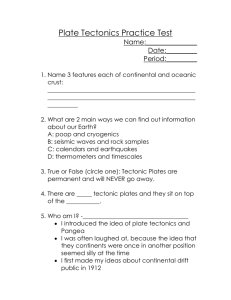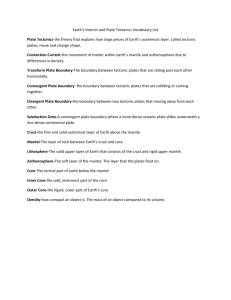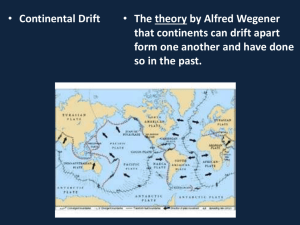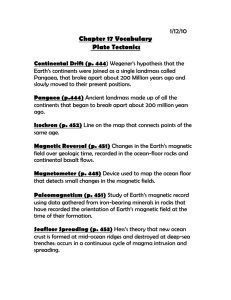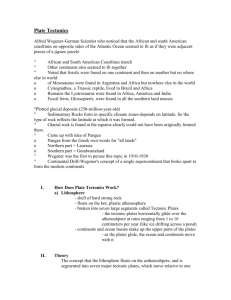Plate Tectonics Webquest
advertisement
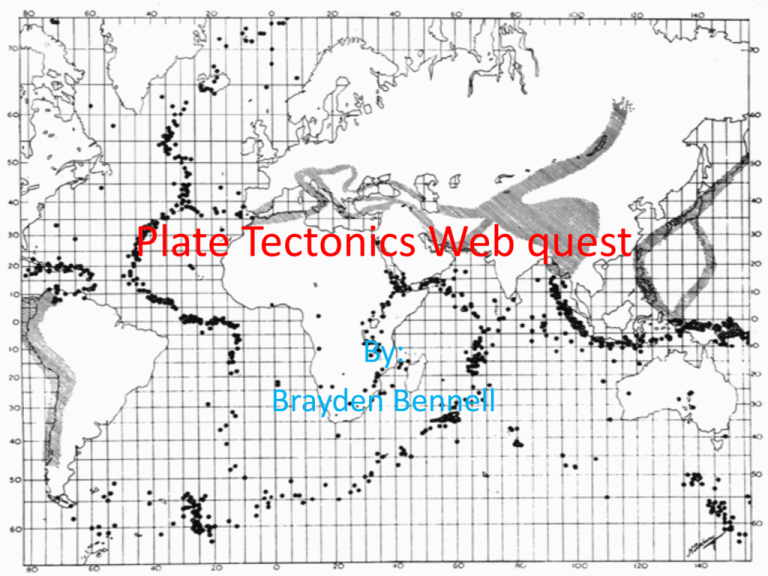
Plate Tectonics Web quest By: Brayden Bennell The History of Pangaea • • • • • • Pangaea was a land mass hundreds of million years ago. Alfred Wegener was the person who had the theory of Pangaea. The theory of a super continent was accepted . Pangaea was all the land mass we have today crammed in to one land mass. In 1915 the first proposed the theory of continental placement which states that parts of the Earth's crust slowly drift on top of a liquid core. Alfred was a geophysicist which studies rock leading up to tectonic plates Arthur Holmes in 1929 emphasized and restated Alfred’s findings and was brought back in to science after the original dismissal of the idea. Convergent Boundaries Facts. • • • Convergent Boundaries are an actively corroding or changing region where two (or more) tectonic plates or fragments move toward one another and collide. Earthquakes are mildly common in these areas. Over time mountains will form from the tectonic plates colliding. An example of a Convergent boundary zone is the area along the western coast of South America where the oceanic Nazca Plate is being moved beneath the continental South American Plate. Picture. Divergent Boundaries Facts. • • • Divergent Plates are straight rippled features that exist between two tectonic plates that are moving away from each other. Volcanoes and earthquakes are likely in these regions Because of constant shifting of the tectonic plates and will cause to make a ridge. The Mid-Ocean Ridge is an underwater mountain system that consists of many mountain ranges, typically having a valley known as a rift running along its back, formed by plate tectonics. Picture. Transform Boundaries Facts • Transform boundary is a fault which runs along the boundary of a tectonic plate. • Earthquakes are the most common for transform boundaries because of the tectonic plates pulling from each other. • The San Andreas fault in California is a major transform boundary which runs from somewhere near the Salton Sea to the Mendocino Triple Junction. This is an example of a trench. Picture. Real world connections Facts. • We live on the North American Plate. • The plates are the pacific plate and the junction on the coast of California on my earlier side contains the us. • Not any time so will you be in danger the plates move slowly and if another tectonic plate moves in we will have more natural disasters but we can prepare. • Earthquakes will become more prevalent in California and more mountains near Ohio area • Landslides are going to become very normal in the rocky mountains. • Mudslides will happen in rained out hill areas such as a rainforest for the rocky mountain area. Pictures. Links Links. • http://geology.com/nsta/ • http://www.historyoftheuni verse.com/pangaea_2.html Picture.
